10+ Sample Construction Waiver
-
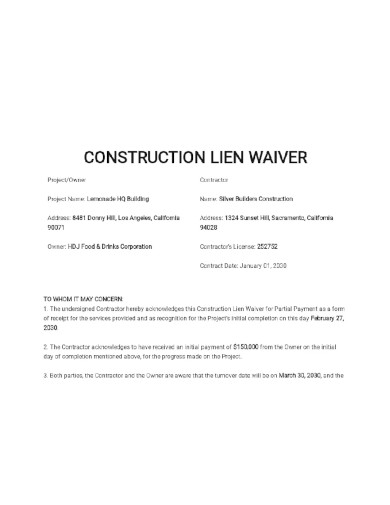
Sample Construction Waiver Template
download now -
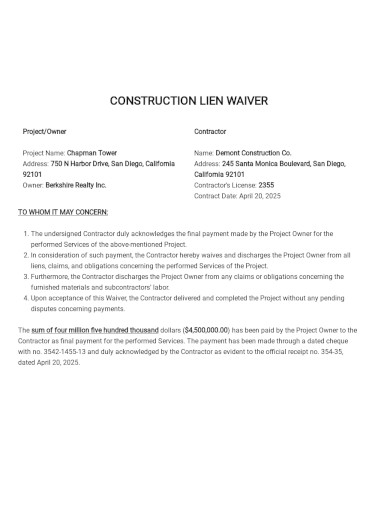
Basic Construction Waiver
download now -
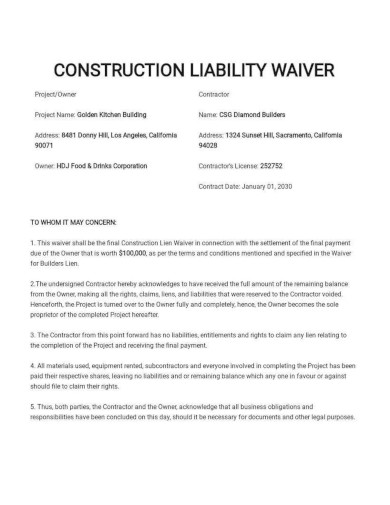
Construction Liability Waiver
download now -
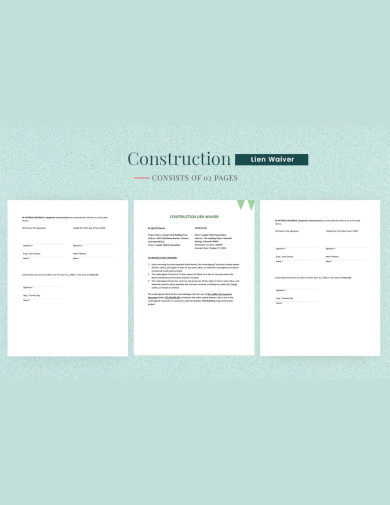
Construction Lien Waiver
download now -
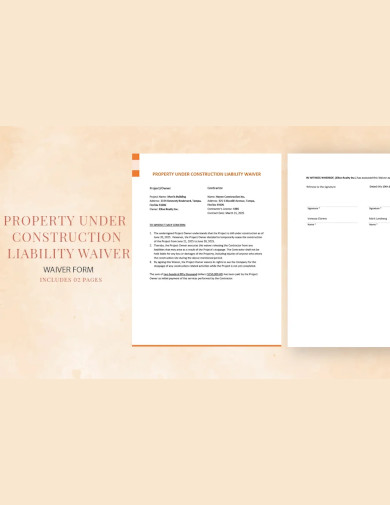
Property Under Construction Liability Waiver
download now -
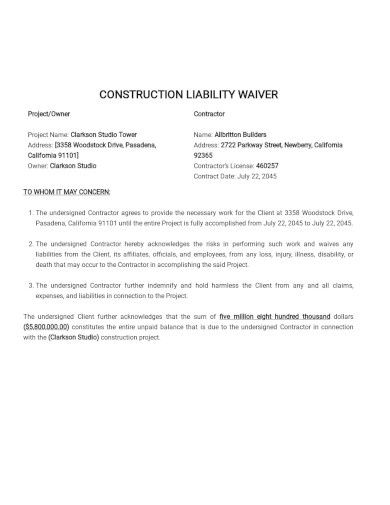
Construction Liability Waiver Form
download now -

Construction Waiver Request
download now -
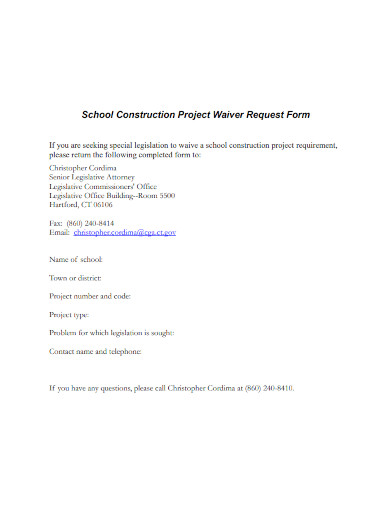
School Construction Project Waiver Request Form
download now -
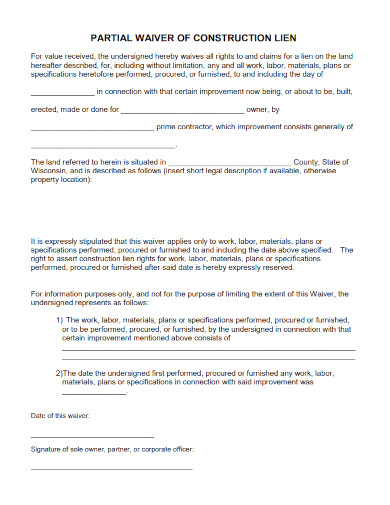
Partial Waiver OF Construction Lien
download now -
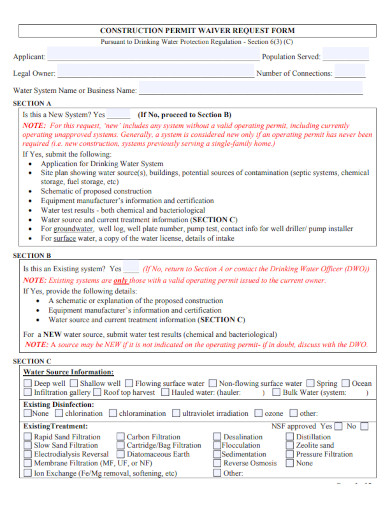
Construction Permit Waiver Request Form
download now -
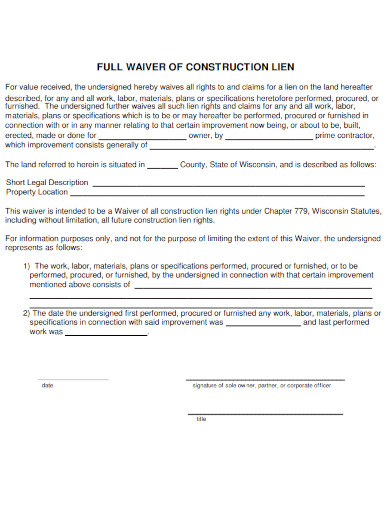
Full Waiver of Construction Lien Form
download now -
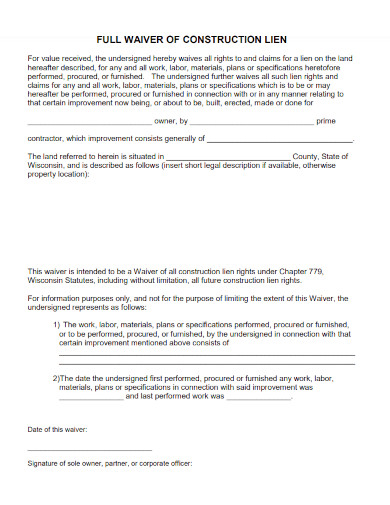
Construction Lien Full Waiver
download now
FREE Construction Waiver s to Download
10+ Sample Construction Waiver
What is the Sample Construction Waiver?
Construction Waivers Come in Various Forms, Including:
How do you Create a Sample Construction Waiver?
What is a Waive in Construction?
What is an Example of a Construction Waiver?
How to Fill the Construction Waiver Form ?
What is the Purpose of Construction Waiver?
What is the Sample Construction Waiver?
A Sample Construction Waiver is a Sample document commonly used in the construction industry. It’s a legal agreement that one party (usually a contractor or subcontractor) signs to release their right to claim a lien against a property in exchange for payment for their services or materials used in a construction project. Essentially, it signifies that the party is waiving their right to file a lien on the property owner’s real estate as a form of security for their payment.
You May Also See SAMPLE Construction Lien Form, SAMPLE Waiver Agreement.
Construction Waivers Come in Various Forms, Including:
Partial Waiver of Lien: This is used when a partial payment is made before the project is complete
Final Waiver of Lien: Issued when the entire project is finished and payment is received.
Conditional Waiver of Lien: The waiver is contingent upon the payment being successfully processed.
Unconditional Waiver of Lien: Payment has been received, and the waiver is no longer dependent on any conditions.
These waivers are essential in construction to ensure that contractors, subcontractors, and suppliers receive the compensation they’re entitled to for their work or materials without resorting to legal actions that could result in a property lien. The Sample Construction Waiver document provides a template or example of how such waivers can be structured, serving as a reference for creating custom waivers for specific projects.
You May Also see SAMPLE Waiver Contract, Construction Lien Form.
How do you Create a Sample Construction Waiver?
Creating a Sample Construction Waiver involves following a specific format and including essential information to ensure it is legally binding and serves its purpose. Here’s a step-by-step guide to creating one:
Step 1: Identify the Parties
Begin by identifying the parties involved: the contractor, subcontractor, or supplier (the party releasing the lien rights) and the property owner or general contractor (the party receiving the waiver).
Step 2: Document Information
Include the title “Construction Waiver” at the top of the document.
Add the date when the waiver is being executed.
Step 3: Description of the Project
Provide a clear description of the construction project. This should include the project name, location, and any relevant identifying details.
Step 4: Payment Information
Specify the amount of payment that is being made in exchange for the waiver.
Include the payment method and date when the payment is expected or has been received.
Step 5: Lien Waiver Language
Include a clear statement that the party signing the waiver is voluntarily giving up their right to file a lien against the property.
Specify whether the waiver is partial or final and whether it is conditional or unconditional, based on the payment received.
Step 6: Signatures
Provide space for the signatures of both parties involved in the transaction.
Each party should sign and date the waiver. It’s important that these signatures are in compliance with local laws and regulations.
Step 7: Notarization (if required)
In some jurisdictions, construction waivers need to be notarized to be valid. Check local requirements to determine if notarization is necessary.
Step 8: Copy Distribution
Ensure that all parties receive a copy of the executed waiver for their records.
Step 9: Filing
Some states or regions may require the filed waiver to be recorded with a government agency.
It’s essential to consult with a legal professional or attorney experienced in construction law to ensure your Sample Construction Waiver complies with the specific laws and regulations in your jurisdiction. Construction lien laws can vary significantly from one location to another, so it’s crucial to get the details right to protect your rights and interests.
You May Also See SAMPLE Construction Contracts, SAMPLE Pre-Construction Proposal.
What is a Waive in Construction?
In the context of construction, a “waiver” typically refers to a document known as a “Construction Waiver” or “Waiver of Lien.” This document is a legal agreement between parties involved in a construction project, such as contractors, subcontractors, suppliers, and property owners. It serves to release or waive the right to file a mechanic’s lien against a property in exchange for payment for services, labor, or materials provided for the construction project.
Mechanic’s liens are a legal claim used by contractors and other construction professionals to secure payment for their work or materials. If a party involved in a construction project is not paid as agreed, they may have the right to place a lien on the property. This lien can make it difficult for the property owner to sell or refinance the property until the dispute is resolved.
A Construction Waiver is used to prevent or remove this lien. There are different types of construction waivers: You May Also See SAMPLE Construction Contract Templates, SAMPLE Residential Construction Contract
Partial Waiver of Lien: Used when a partial payment is made for work done or materials supplied. It releases the right to file a lien for that partial payment.
Final Waiver of Lien: Used when the entire project is completed, and final payment is received. It releases all lien rights for the entire project.
Conditional Waiver of Lien: This waiver is contingent on the payment being successful, meaning that the lien rights are waived only when the payment is confirmed.
Unconditional Waiver of Lien: This waiver is issued once payment is received. It doesn’t depend on any conditions; the lien rights are immediately waived.
These waivers are crucial for ensuring that contractors, subcontractors, and suppliers receive the payments they are owed without having to resort to legal action. They are an integral part of the construction payment process and help maintain a smooth workflow in construction projects by providing a sense of security for all parties involved.
What is an Example of a Construction Waiver?
An example of a Construction Waiver might look something like the following:
Partial Conditional Waiver and Release of Lien
Project Information:
- Project Name: [Project Name]
- Property Address: [Property Address]
- Owner/General Contractor: [Name of Owner or General Contractor]
- Date: [Date of the Waiver]
In consideration of the sum of $[Payment Amount] received from [Name of Owner or General Contractor], the undersigned hereby waives and releases any and all rights to file or claim any lien or right of lien against the above-mentioned property for labor, services, or materials furnished up to and including the [Date of Payment].
The undersigned represents and warrants that he or she has full authority to execute this Waiver and Release.
This Waiver and Release covers and includes all unpaid materials, labor, or services furnished up to and including the above date, and is provided as a condition of receiving the payment referred to above.
[Signature of the Party Releasing the Lien] [Date]
Please note that this is a general example and should be customized to the specific details of your construction project, including the payment amount, project name, and other relevant information. Also, the language and format of construction waivers may vary by jurisdiction, so it’s essential to ensure that your waiver complies with local laws and regulations. It’s advisable to consult with a legal professional or an attorney experienced in construction law to create a legally sound and valid construction waiver.
How to Fill the Construction Waiver Form ?
Filling out a Construction Waiver form involves providing accurate and specific information related to the construction project, payment, and parties involved. Here’s a step-by-step guide on how to fill out a typical Construction Waiver form:
Step 1: Identify the Form Type
- Determine whether the form is a partial waiver, final waiver, conditional, or unconditional waiver, and make sure it matches the type of payment you’re receiving.
Step 2: Project Information
- Include the project name, property address, and the name of the property owner or general contractor.
Step 3: Payment Details
- Specify the payment amount you’re receiving in exchange for the waiver.
- Include the payment method and the date of the payment.
Step 4: Party Information
- Provide the name of the party who is releasing the lien rights (the contractor, subcontractor, or supplier).
- Include the signature of the party releasing the lien, and make sure it is in compliance with local legal requirements.
Step 5: Date
- Add the date when the waiver is being executed.
Step 6: Review and Verification
- Carefully review the form for accuracy and completeness.
- Ensure that all parties involved understand and agree to the terms of the waiver.
Step 7: Execution and Distribution
- Once the form is complete, have all relevant parties sign it.
- Each party should keep a copy for their records.
Step 8: Notarization (if required)
- Depending on your local jurisdiction’s laws, you may need to notarize the document. Check local requirements to determine if notarization is necessary.
It’s crucial to follow the specific language and formatting requirements in your region to create a legally valid Construction Waiver. Construction lien laws and waiver forms can vary from place to place, so it’s advisable to consult with a legal professional or attorney experienced in construction law to ensure your form complies with local regulations. This ensures that your waiver will be legally effective in releasing lien rights.
What is the Purpose of Construction Waiver?
The primary purpose of a construction waiver, often referred to as a “Waiver of Lien,” is to release or waive a party’s right to file a mechanic’s lien against a property in exchange for payment for services, labor, or materials provided for a construction project. Construction waivers are used to ensure that contractors, subcontractors, and suppliers receive the payment they are owed, without the need for legal actions like placing a lien on the property. They help facilitate smooth payment processes in construction projects and provide security for all parties involved.
